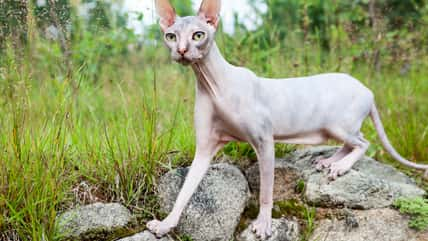Dwarf Lemurs Age In Reverse During Hibernation

Some common signs of aging include thinning hair and wrinkled skin, but before they even show up on our faces, many age-related changes start within our cells, even our DNA. There are creatures in this world that have developed ways to temporarily reverse the aging process.
For example, the fat-tailed dwarf lemur of Madagascar can defy time during its annual hibernation period. The primates are the size of hamsters.
They have tiny caps on the ends of their chromosomes known as telomeres. They act much like the plastic tips on the ends of shoelaces that protect them from fraying.
Each time a cell divides, small chunks of telomeres are lost in the process and get shorter as time goes on. Chronic stress, poor sleep, and a sedentary lifestyle can make them decline at a more rapid rate.
Eventually, telomeres deteriorate to the point where they stop providing protection, and cells lose the ability to function.
However, dwarf lemurs can keep their telomeres from shrinking. They can rejuvenate their cells during hibernation.
When winter arrives, dwarf lemurs will hunker down in underground burrows or tree holes. Each year, they spend up to seven months in a state of suspended animation.
It is a survival strategy that involves temporarily slowing down or stopping biological function to preserve physiological capabilities.
During this period, the animals’ heart rate goes from 200 beats per minute to fewer than eight. They also become cool to the touch and only take a breath about every 10 minutes.

Sign up for Chip Chick’s newsletter and get stories like this delivered to your inbox.
Hibernating dwarf lemurs can stay in this state for about a week before they need to warm up briefly. Then, they settle back into torpor while waiting for warm weather to return.
In the new study, researchers followed 15 dwarf lemurs at the Duke Lemur Center before, during, and after hibernation. They tested cheek swabs to see how the telomeres changed over time.
The researchers gradually lowered the temperature from 77 degrees Fahrenheit to the mid-50s to mimic winter-like conditions in the lemurs’ natural habitat.
Food was offered to one group of animals if they were awake and active. The other group did not eat, drink, or move for the entire hibernation period. They lived off the fat stored in their tails as they would in the wild.
Genetic sequencing revealed that the lemurs’ telomeres were not shortening after each round of cell division. In fact, they actually got longer during hibernation. The telomeres that got longer were found in lemurs that experienced deeper states of torpor.
In comparison, the lemurs that woke up to eat had relatively stable telomere lengths. Two weeks after the animals emerged from hibernation, their telomeres reverted back to their length before hibernation, which means that the changes are only temporary.
The lengthening might serve the purpose of counteracting any cell damage that might occur during rewarming phases.
The lemurs may increase the number of times their cells divide, creating new life. They live up to twice as long as other primates of a similar size.
The study was published in Biology Letters.
More About:Animals





